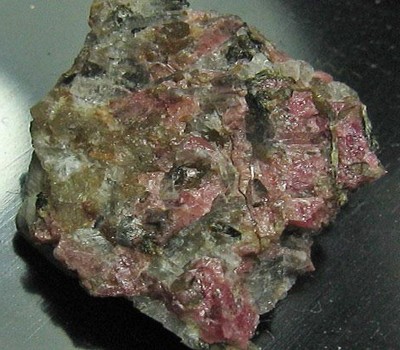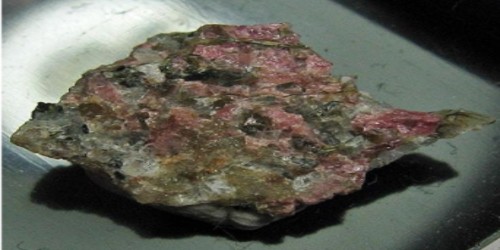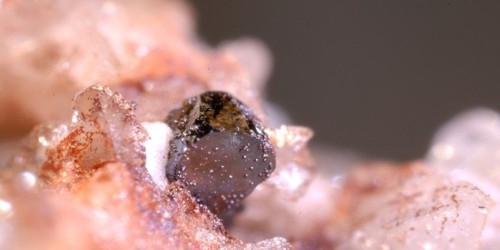Manganoeudialyte is an moderately rare mineral of the eudialyte group, with formula Na14Ca6Mn3Zr3Si2[Si24O72(OH)2]Cl2·4H2O. The formula given is one of the forms that can be given, based on the originally reported one, and shows the dominance of silicon at both the M3 and M4 sites. As suggested by its name, it is the manganese-analogue of eudialyte.
General Information
- Category: Cyclosilicates
- Formula: Na14Ca6Mn3Zr3Si2[Si24O72(OH)2]Cl24H2O
- Crystal system: Trigonal
- Crystal class: Ditrigonal pyramidal (3m) (same H-M symbol)

Properties
- Color: Pink to purple
- Crystal habit: interstitial patches
- Cleavage: None
- Fracture: Uneven
- Tenacity: Brittle
- Mohs scale hardness: 5-6
- Luster: Vitreous
- Streak: White
- Diaphaneity: Transparent or translucent
- Density: 2.89-2.94 g/cm3 (measured)
Occurrence and association
Manganoeudialyte was discovered in khibinites of the Poços de Caldas massif, Brazil. It is an interstitial phase in nepheline syenite (khibinite). Associated minerals are aegirine, analcime, astrophyllite, cancrinite, fluorite, lamprophyllite, nepheline, potassium feldspar, rinkite, sodalite, and titanite.
Association: Eudialyte, K-feldspar, nepheline, aegirine, analcime, sodalite, rinkite, lamprophyllite, astrophyllite, titanite, fluorite, cancrinite.
Information Source;
















